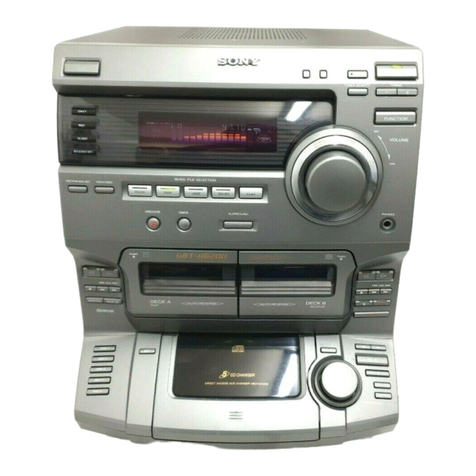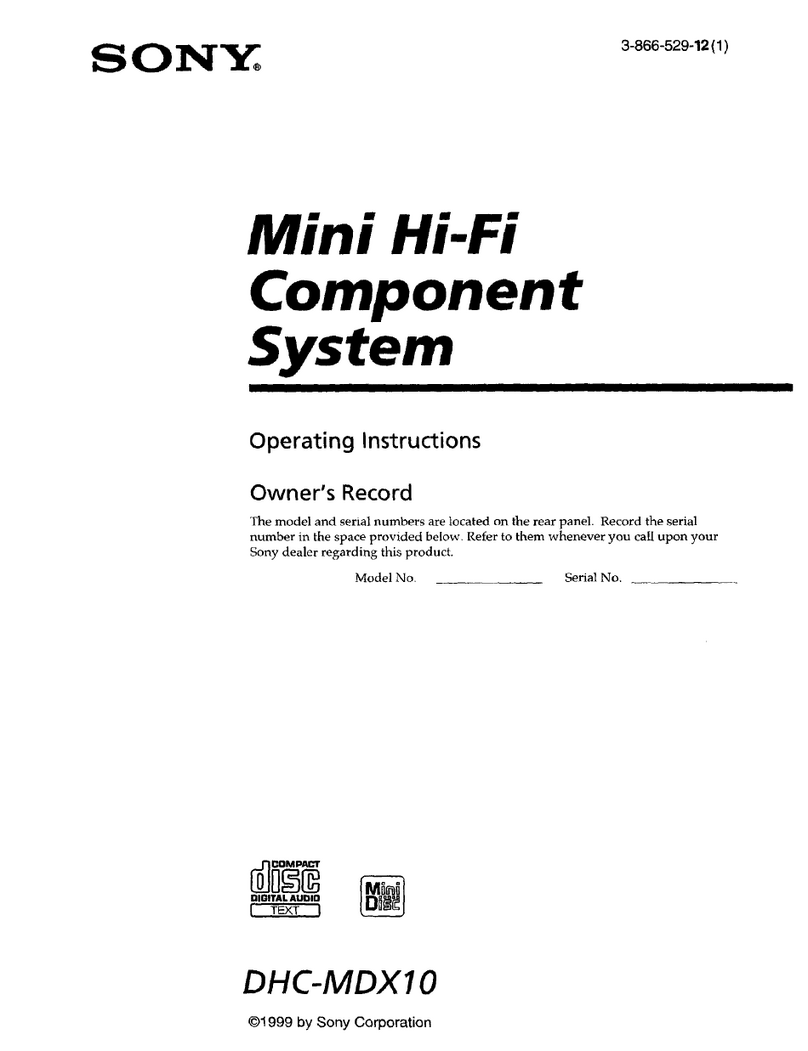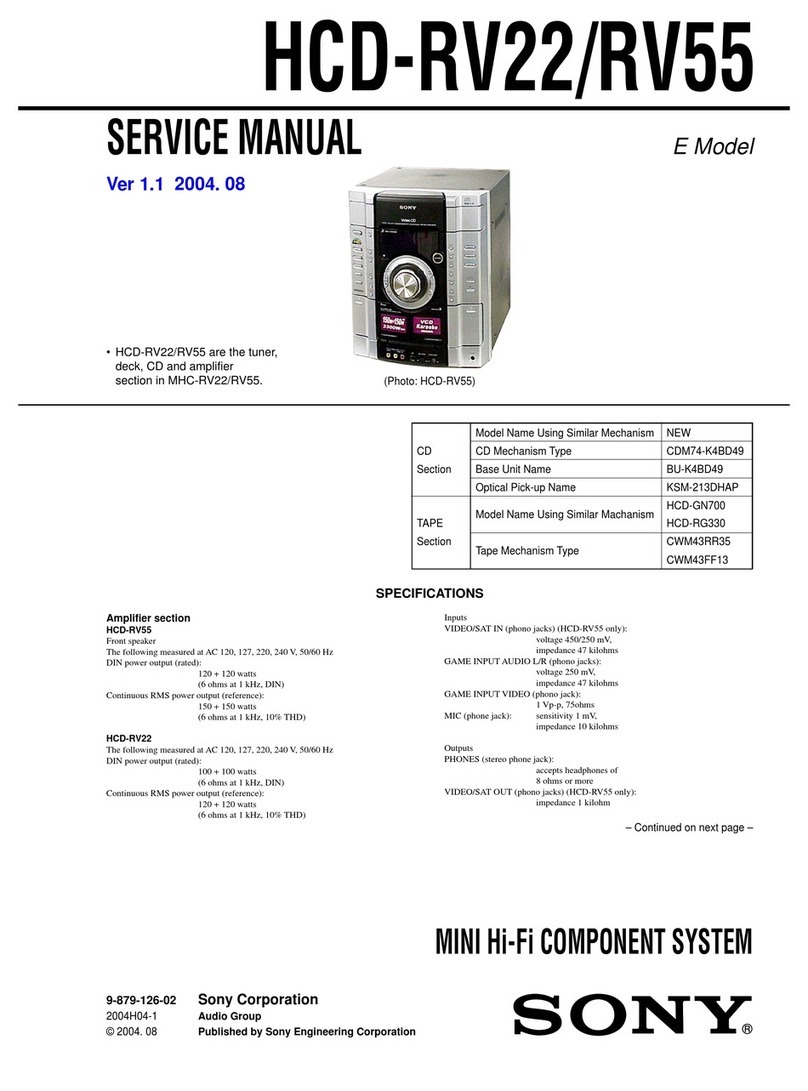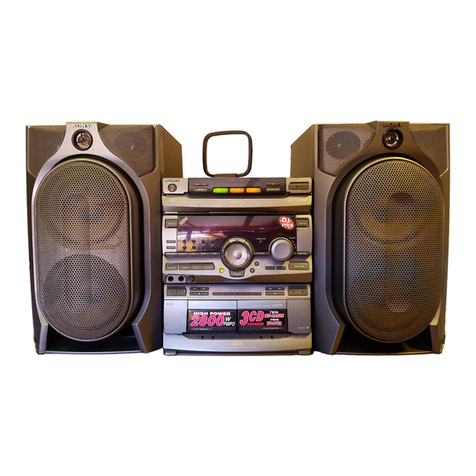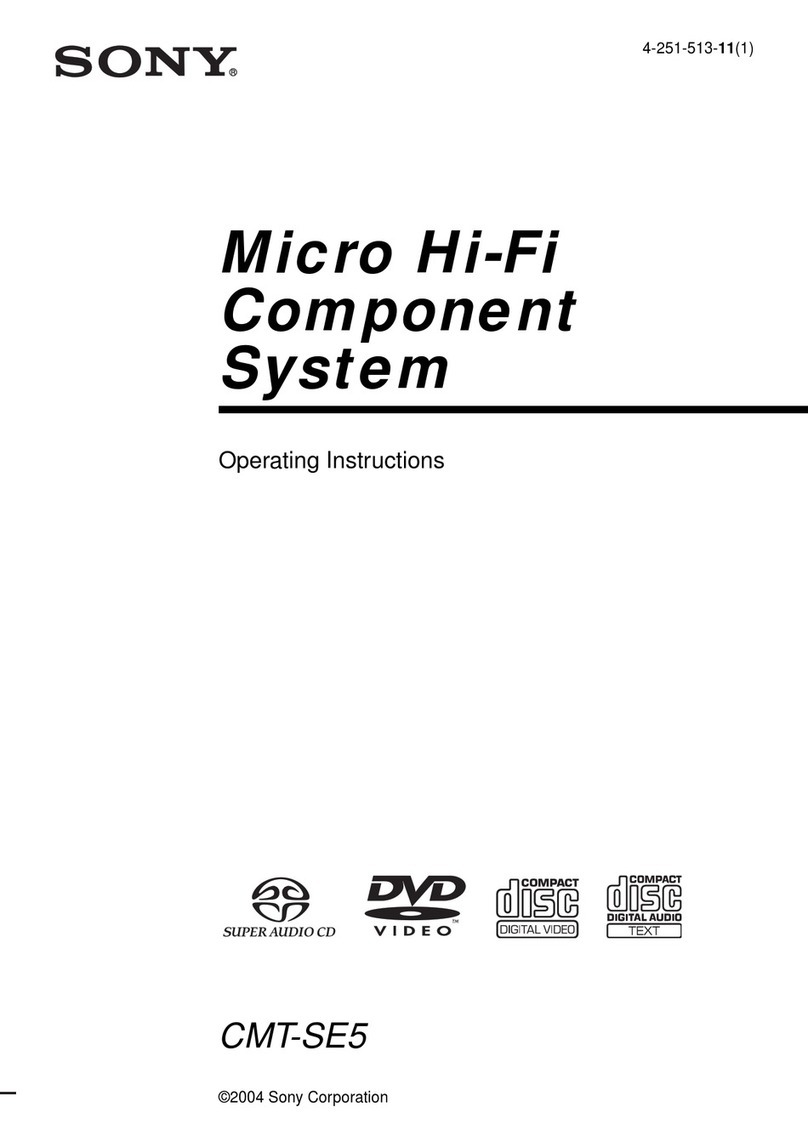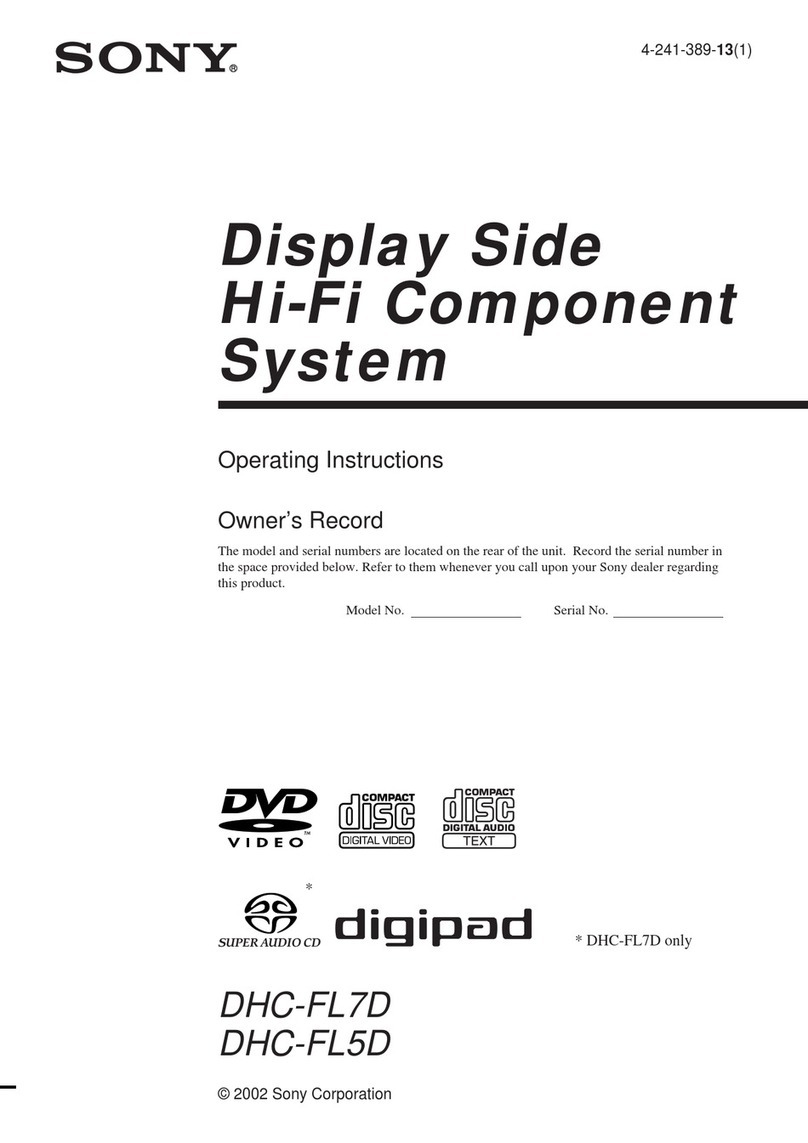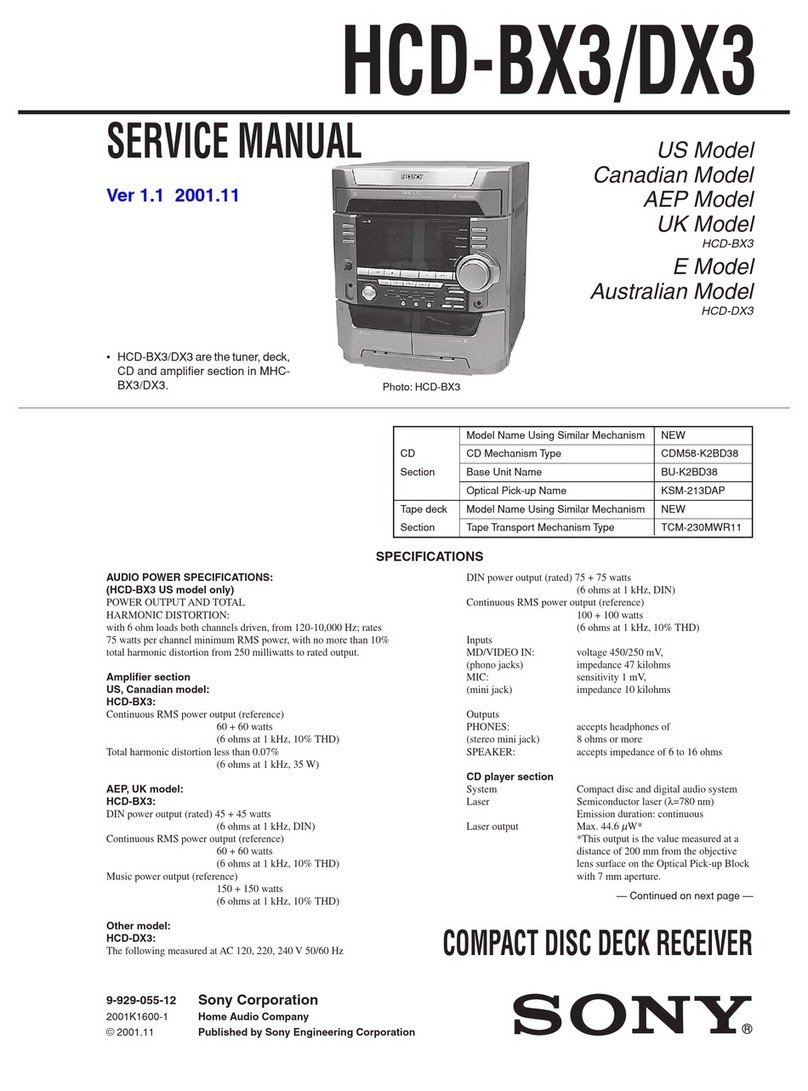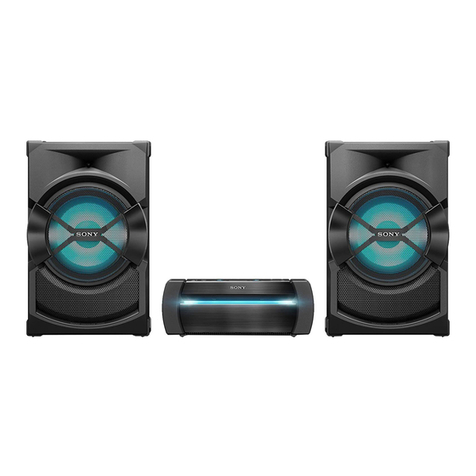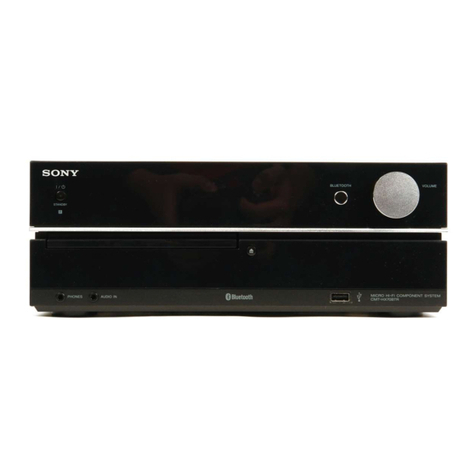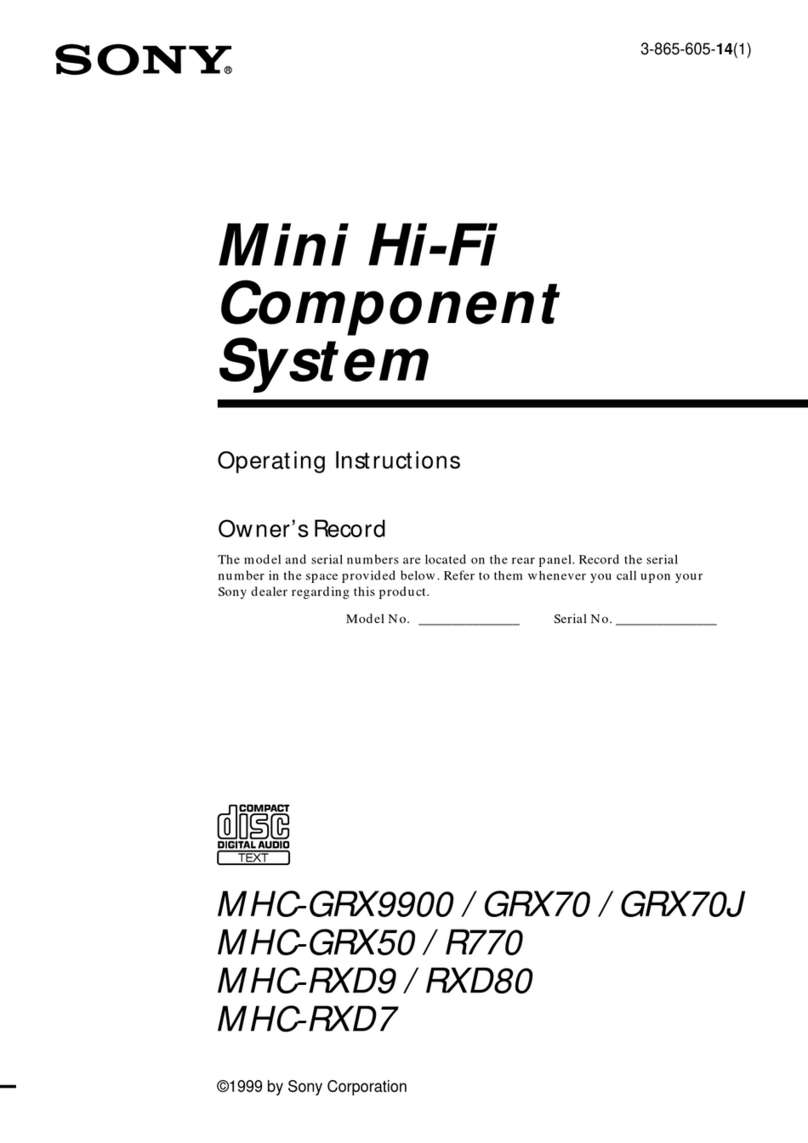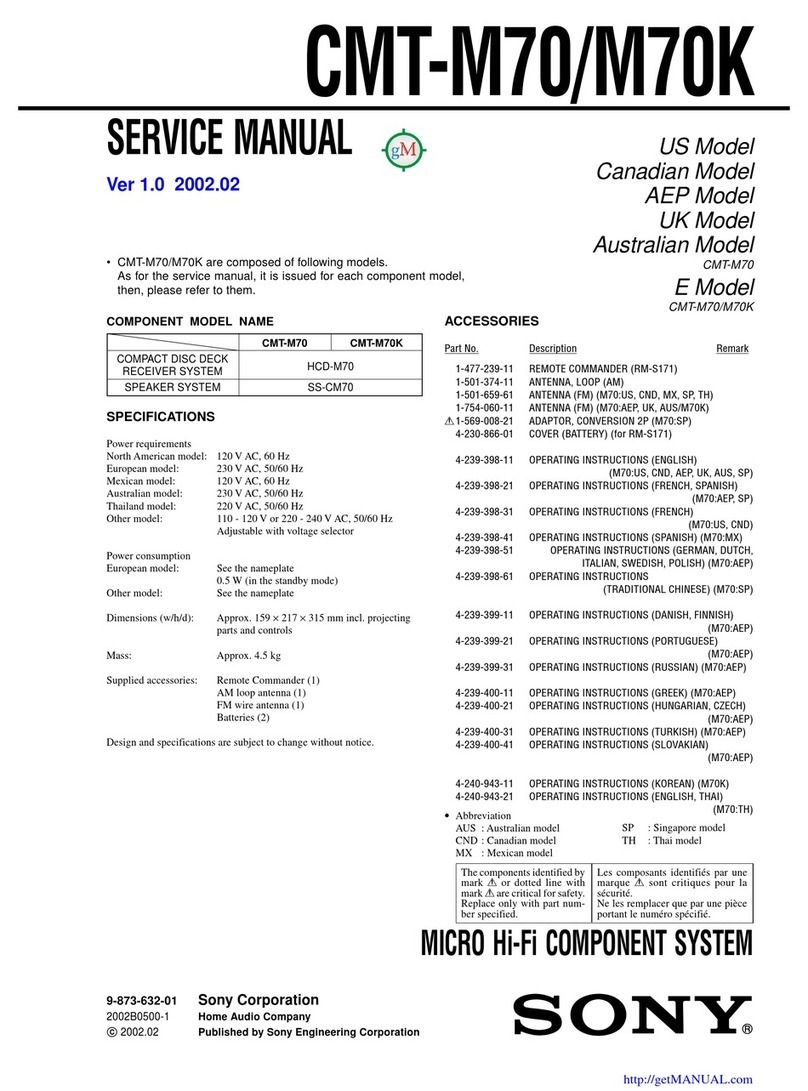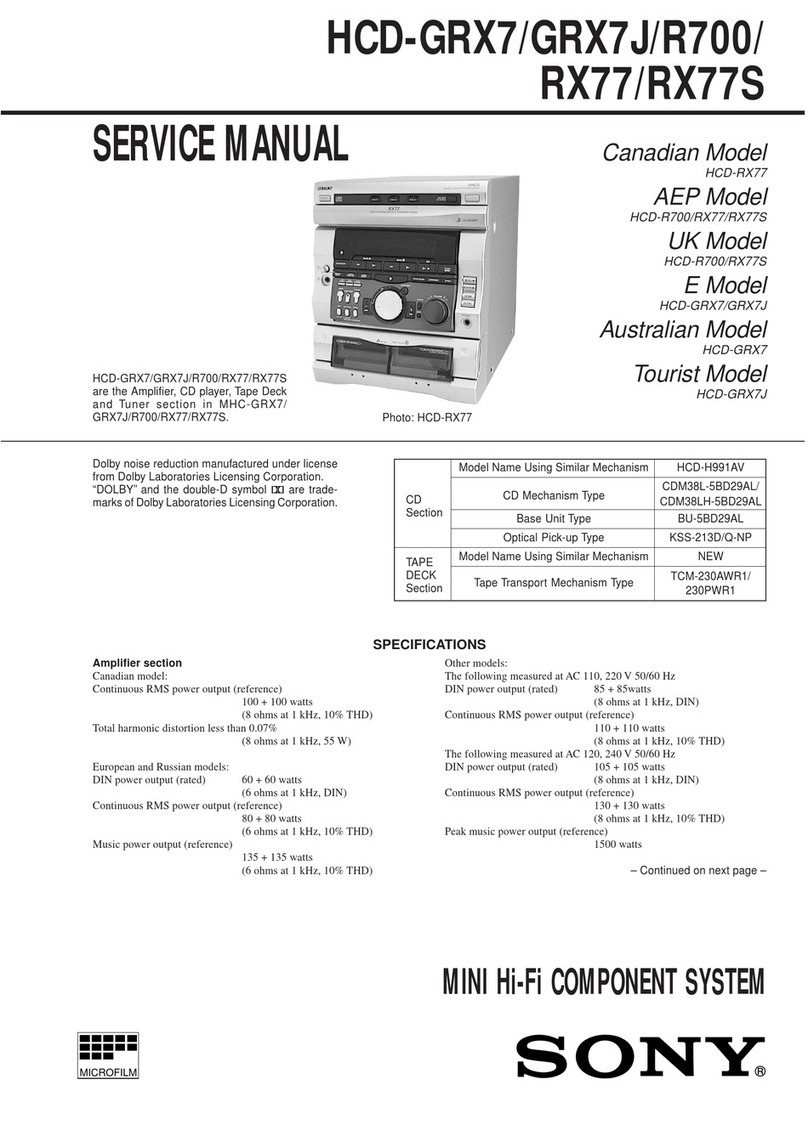– 4 –
1. SERVICING NOTE ..........................................................5
2. GENERAL ..........................................................................6
3. DISASSEMBLY
3-1. Loading Panel ....................................................................... 9
3-2. Front Panel ........................................................................... 9
3-3. Cassette Mechanism Deck .................................................. 10
3-4. Panel Board and Cont Com Board ......................................10
3-5. Disc Tray ........................................................................... 11
4.TEST MODE .................................................................... 12
5. SERVICE MODE ............................................................14
6. MECHANICAL ADJUSTMENTS ..........................16
7. ELECTRICAL ADJUSTMENTS ............................... 16
8. DIAGRAMS
8-1. Circuit Boards Location ......................................................22
8-2. Block Diagrams
• CD Section ....................................................................... 23
• Video Section ................................................................... 25
• Deck Section .................................................................... 27
• Main Section .................................................................... 29
• Power Section ..................................................................31
• Display Section ................................................................ 33
• Section ............................................................... 35
8-3. Printed Wiring Board – CD Section –.................................37
8-4. Schematic Diagram – CD Section – ................................... 39
8-5. Schematic Diagram – Deck Section – ................................41
8-6. Printed Wiring Board – Deck Section –..............................43
8-7. Printed Wiring Board – Video Section –............................. 45
8-8. Schematic Diagram – Videon (1/3) Section – ..................... 47
8-9. Schematic Diagram – Videon (2/3) Section – ..................... 49
8-10. Schematic Diagram – Videon (3/3) Section – ..................51
8-11. Printed Wiring Board – Main Section – ........................... 53
8-12. Schematic Diagram – Main (1/4) Section – .....................55
8-13. Schematic Diagram – Main (2/4) Section – .....................57
8-14. Schematic Diagram – Main (3/4) Section – .....................59
8-15. Schematic Diagram – Main (4/4) Section – .....................61
8-16. Printed Wiring Board – Mic/HP Section – ....................... 63
8-17. Schematic Diagram – Mic/HP Section – .......................... 64
8-18. Printed Wiring Board – PowerAmp Section –................. 65
8-19. Schematic Diagram – Power Amp Section – ................... 67
8-20. Schematic Diagram – Transformer Section –................... 69
8-21. Printed Wiring Board – Transformer Section – ................71
8-22. Printed Wiring Board – Leaf SW Section – .....................72
8-23. Schematic Diagram – Leaf SW Section – ........................72
8-24. Printed Wiring Board – Display Section – ....................... 73
8-25. Schematic Diagram – Display Section – ..........................75
8-26. Schematic Diagram – Panel Section – ............................. 77
8-27. Printed Wiring Board – Panel Section –........................... 79
8-28. Schematic Diagram – CD Motor Section – ......................81
8-29. Printed Wiring Board – CD Motor Section – ...................83
8-30. IC Block Diagrams ...........................................................85
8-31. IC Pin Functions ...............................................................87
TABLE OF CONTENTS
9. EXPLODEDVIEWS
9-1. Case Section........................................................................ 99
9-2. Chassis Section ................................................................. 100
9-3. Front Panel Section ........................................................... 101
9-4. CD Mechanism Deck Section-1 (CDM38L-5BD24AL) .. 102
9-5. CD Mechanism Deck Section-2 (CDM38L-5BD24AL) .. 103
9-6. Base Unit Section (BU-5BD24AL) .................................. 104
9-7. TC Mechanism Section 1
(TCM230AWR1, TCM230PWR1) ................................... 105
9-8. TC Mechanism Section 2
(TCM230AWR1, TCM230PWR1) ................................... 106
10. ELECTRICAL PARTS LIST .................................. 107

